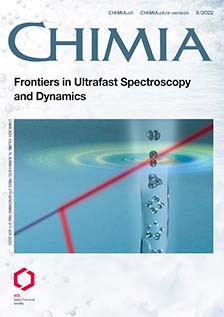Control of the Two-photon Visual Process in ex vivo Retinas and in Living Mice
DOI:
https://doi.org/10.2533/chimia.2022.570PMID:
38069727Keywords:
Rhodopsin, Two-photon absorption, Visual process, Electroretinography, Femtosecond pulse-shapingAbstract
Palcewska et al. first demonstrated near infrared (NIR) visual response in human volunteers upon two-photon absorption (TPA), in a seminal work of 2014, and assessed the process in terms of wavelength- and power-dependence on murine ex-vivo retinas. In the present study, ex-vivo electroretinography (ERG) is further developed to perform a complete characterization of the effect of NIR pulse duration, energy, and focal spot size on the response. The same set of measurements is successively tested on living mice. We discuss how the nonlinear intensity dependence of the photon absorption process is transferred to the amplitude of the visual response acquired by ERG. Finally, we show that the manipulation of the spectral phase of NIR pulses can be translated to predictable change in the two-photon induced response under physiological excitation conditions.
Funding data
-
Schweizerischer Nationalfonds zur Förderung der Wissenschaftlichen Forschung
Grant numbers CRSII5 170981
Downloads
Published
Issue
Section
License
Copyright (c) 2022 Geoffrey Gaulier, Quentin Dietschi, Aleksa Djorovic, Luca La Volpe, Tania Rodrigues, Luigi Bonacina, Ivan Rodriguez, Jean-Pierre Wolf

This work is licensed under a Creative Commons Attribution 4.0 International License.







